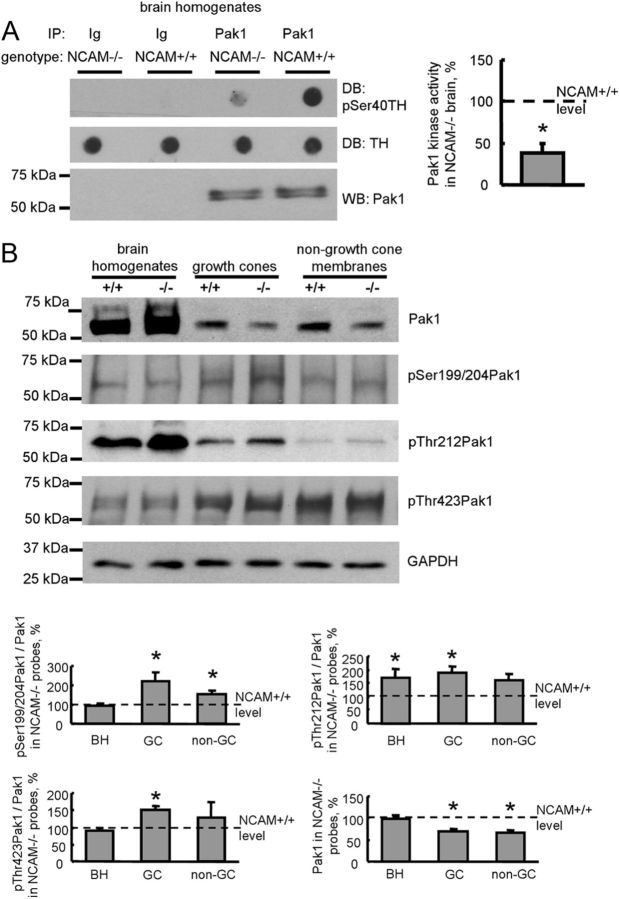Figure 3.
Kinase activity and plasma membrane association of Pak1 are reduced, and phosphorylation of Pak1 is enhanced in NCAM−/− brains. A, Pak1 was immunoprecipitated from NCAM+/+ and NCAM−/− mouse brain lysates (IP: Pak1). Mock immunoprecipitates obtained with nonimmune Ig served as control (IP: Ig). Western blot (WB) with Pak1 antibodies shows that Pak1 was immunoprecipitated with the same efficiency from NCAM+/+ and NCAM−/− probes (bottom). The precipitates were incubated with TH peptide, and total levels of TH peptide and levels of TH peptide phosphorylated by Pak1 at Ser40 were analyzed by dot blot (DB). Note that Pak1 from NCAM+/+ brains phosphorylates the TH peptide more efficiently than Pak1 from NCAM−/− brains. Graph shows quantitation of dot blots from three experiments. Mean + SEM values for NCAM−/− probes normalized to NCAM+/+ values set to 100% (dashed line) are shown. *p < 0.05, paired t test. B, Brain homogenates (BH), growth cones (GC), and nongrowth cone membranes (non-GC) from NCAM+/+ and NCAM−/− mouse brains probed by Western blot with antibodies against total Pak1 or Pak1 phosphorylated at Ser199/204, Thr212, or Thr423. Labeling for GAPDH was included as loading control. Graphs show quantitation of the blots from six experiments. Mean + SEM values for NCAM−/− probes normalized to NCAM+/+ levels set to 100% (dashed lines) are shown. *p < 0.05, paired t test, compared with corresponding NCAM+/+ values.

